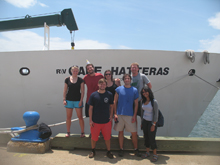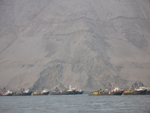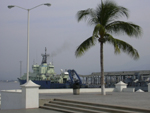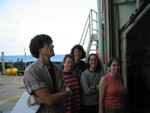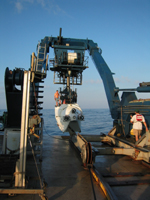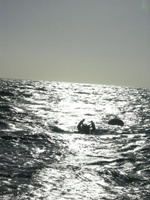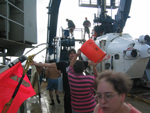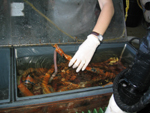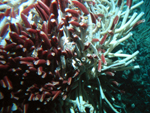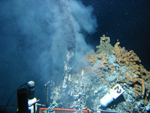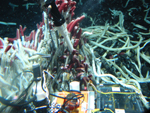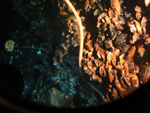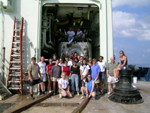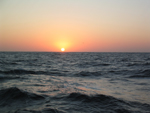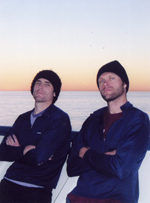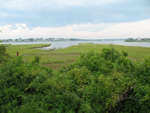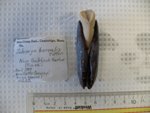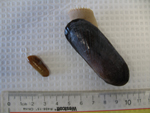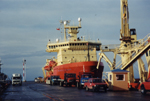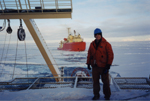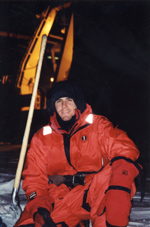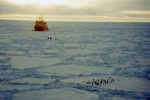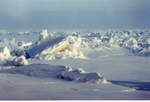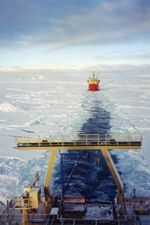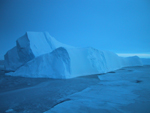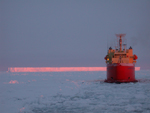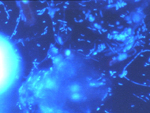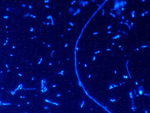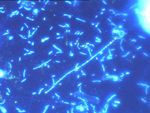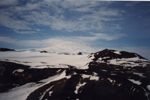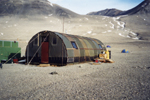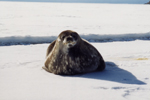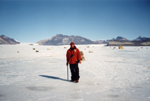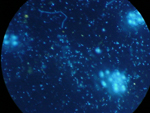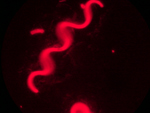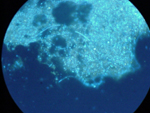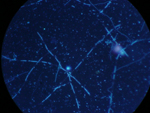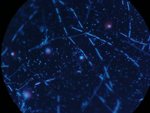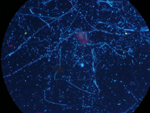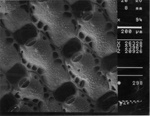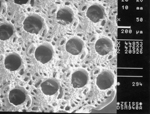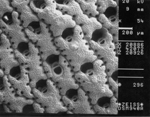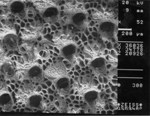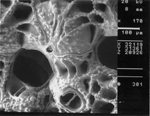Field Work
Oxygen Minimum Zones - Eastern Tropical North Pacific and Gulf of Mexico
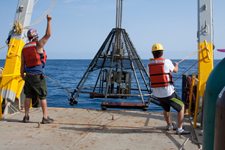
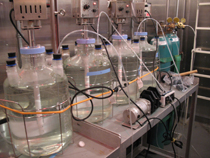
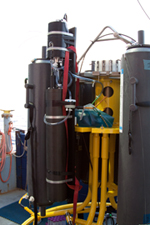
(Photo: H. Olins)
(Photo: H. Olins)
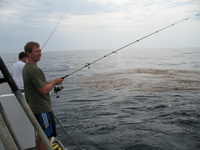
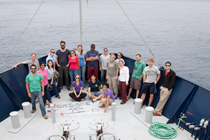
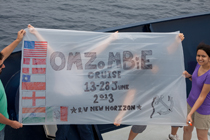
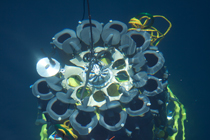
(Photo: H. Olins)
Oxygen Minimum Zone - Eastern Tropical South Pacific
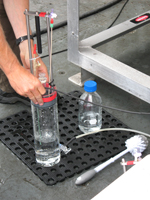
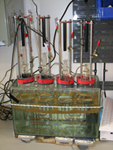
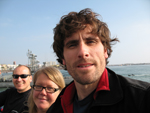

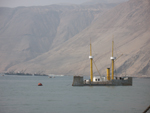
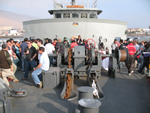
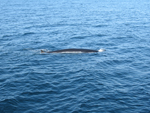
Vidal Gormaz.
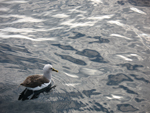

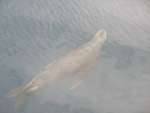
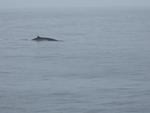
Warmer Climes
R/V Atlantis in Manzanillo, Mexico. Extreme 2003 cruise. (Photo: ILGN)
DSV Alvin.
Extreme 2003 cruise.
9N East Pacific Rise (EPR).
Extreme 2003 cruise.
9N East Pacific Rise (EPR).
On deck. FS, Andrea Nussbaumer, Colleen Cavanaugh, Irene Newton, Tara Harmer. (Photo: unknown)
Boarding Alvin.
(Photo: ILGN)
(Photo: ILGN)
Descending off the stern.
(Photo: ILGN)
(Photo: ILGN)
Alvin at the surface.
(Photo: ILGN)
(Photo: ILGN)
Post dive shower.
(Photo: ILGN)
(Photo: ILGN)
Riftia pachyptila tubeworms in the biobox. (Photo: ILGN)
Riftia clump.
(Photo: ILGN)
(Photo: ILGN)
Black smokers.
(Photo: ILGN)
(Photo: ILGN)
Sampling Riftia.
(Photo: ILGN)
(Photo: ILGN)
Sampling elevator launched from R/V Atlantis.
Extreme 2003 crew.
Sunset on the Pacific.
(Photo: ILGN)
(Photo: ILGN)
Hanging with Eric DeChaine. Bow of the R/V Atlantis. Extreme 2004 cruise, EPR.
Solemya velum habitat, tidal mudflats, Point Judith, RI.
YouTube video of S. velum burrowing through glass beads. Courtesy of Guus Roeselers.
Solemya borealis, with foot extruded. Chemosynthetic symbionts live intracellularly
in the clam gills.
From Harvard's MCZ collection.
in the clam gills.
From Harvard's MCZ collection.
The smaller, and more ubiquitous, Solemya velum (left) with S. borealis. Sequencing of the S. velum symbiont genome should be completed in fall 2008.
Marguerite Bay, Western Antarctic Pennisula
R/V Nathaniel B. Palmer
docked in Punta Arenas, Chile.
docked in Punta Arenas, Chile.
Columbian ceremonial naval ship, Punta Arenas.
Antarctic fur seal,
Palmer Station.
Palmer Station.
Ice mushrooms,
near Adelaide Island.
near Adelaide Island.
NBP0104 cruise.
R/V Laurence M. Gould trailing.
R/V Laurence M. Gould trailing.
Young sea ice, Laserev Bay.
Fritsen lab crew: Sarah Marschall and me. Palmer Station, LMG0104 cruise.
Near Adelaid Island.
Night coring.
NBP0104 cruise.
NBP0104 cruise.
Adelie penguins on floe,
R/V LMG in background. NBP0104 cruise.
Mountains of the Antarctic Peninsula, near Palmer Station.
Rafted sea ice. Note algal layer at base of
rafted floe.
Sunset over icebergs,
Laserev Bay.
Laserev Bay.
Breaking trail for the Gould. NBP0104 cruise.
Coring sea ice,
NBP0104 cruise.
Sunrise from a snow pit. Coring sea ice in
Marguerite Bay.
Marguerite Bay.
Ice floes, Marguerite Bay. (Photo: G. Lawson)
Western Antarctic Peninsula.
(Photo: unknown)
Berg.
(Photo: G. Lawson)
(Photo: G. Lawson)
R/V LMG seen from stern of the Palmer, Marguerite Bay. (Photo: G. Lawson)
Below: DAPI-stained cells (blue under UV) isolated from Antarctic sea ice.
These ice samples were collected by CHF in the Ross Sea (NBP-9901 cruise)
These ice samples were collected by CHF in the Ross Sea (NBP-9901 cruise)
McMurdo Dry Valleys, Antarctica
Dec. 1999-Feb. 2000: During my senior year at Middlebury, I assisted Chris Fritsen and Ed Adams (Montana State) in sampling the microbial life locked within glaciers and lake ice of Antarctica's McMurdo Dry Valleys (see the Dry Valley LTER site). This project, funded by NSF's Life in Extreme Environments (LExEn) program, focused on the amazing capacity for microorganisms to persist in the harshest environments on Earth. This work formed the basis for a senior thesis examining the spatial distriibution and abundance of phototrophs (mostly cyanobacteria) in perrenial ice covers of Lakes Fryxell and Bonney.
Mount Erebus,
from McMurdo Station.
1:00 am, Jan. 1, 2000. Happy New Millenium.
On the Ross Ice shelf.
Castle Rock and Mount Erebus, from McMurdo.
Lake Fryxell base,
sleeping tents behind.
sleeping tents behind.
Julie Hunter (grad student, left), Chris (center), Ed.
Hard at work on Lake Fryxell. Julie (left), Chris (rear).
West lobe of Lake Bonney, Taylor Glacier behind.
On the Canada Glacier.
Weddell seal near
Discovery Bluff.
Discovery Bluff.
On the Taylor Glacier,
upper Taylor Valley.
upper Taylor Valley.
Landing on the
Canada Glacier.
Canada Glacier.
Ventifact, midnight,
above Lake Bonney.
above Lake Bonney.
Taylor Valley.
Sledding gear across
Lake Fryxell.
Lake Fryxell.
Ross Sea fauna.
Below: DAPI-stained cells (blue under UV) isolated from the ice and water column of Lakes Fryxell and Bonney.
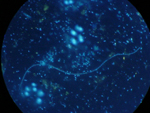
ice water
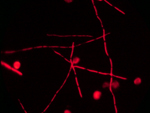
water column ~6-10m beneath lake ice
Bering Sea
F/V Aldebaran, sister ship to F/V Arcturas during the NMFS trawl survey.
Sorting table on the back deck of the F/V Arcturas.
Home port: Dutch Harbor, Alaska.
